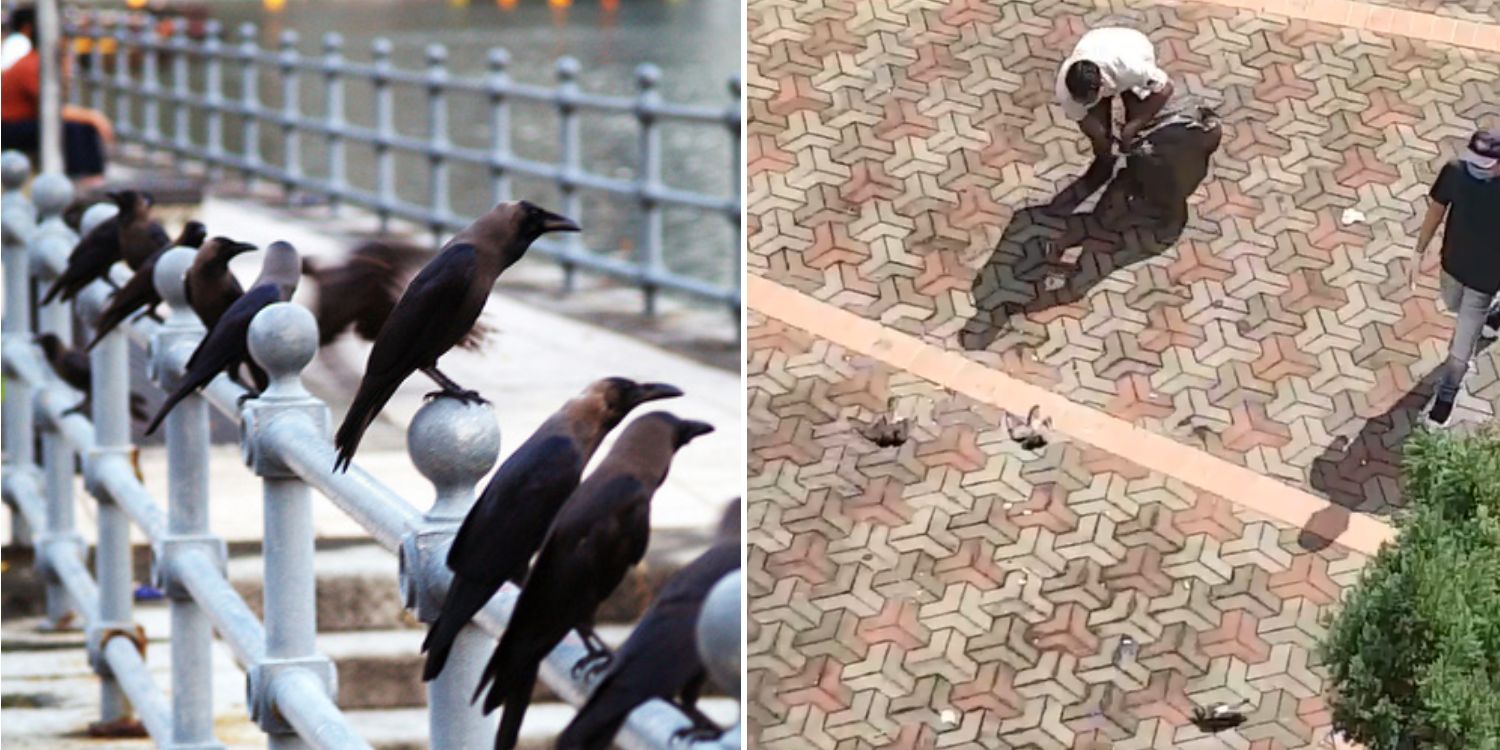This piece is part of MS Speaks, a segment in which MS News reporters share their honest views on current affairs and trending topics.
Culling To Keep The Bird Population In Check Is Necessary Despite Naysayers
Besides the relatively harmless signs discouraging the feeding of birds in public places, Singapore has at times resorted to more drastic measures to control the local bird population.
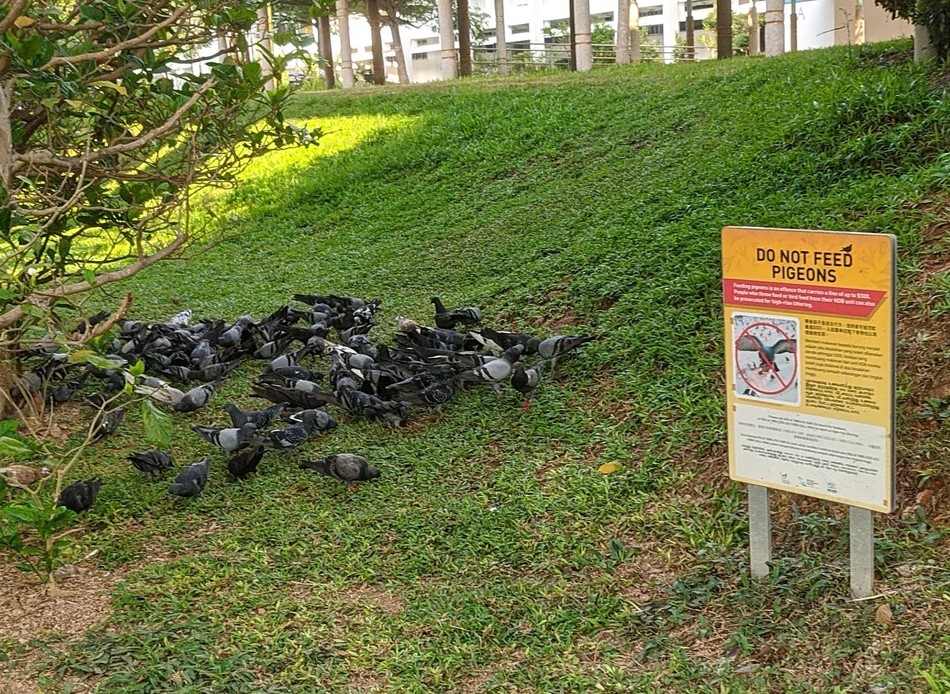
Source: Reddit
Among them is the culling of birds like pigeons and crows for reasons like overpopulation and safety.
Such moves often anger animal lovers who feel that it’s inhumane and cruel, in addition to undermining the creatures’ lives.
While there are alternative methods, the point remains that in times of necessity, culling is the most efficient way.
Not keeping bird population in check can cause hygiene issues
Seeing birds around our neighbourhood can be a comforting sign as they offer a slice of nature in an urban setting.
But too many of them in one place may lead to a slew of issues, including, most pertinently, hygiene.
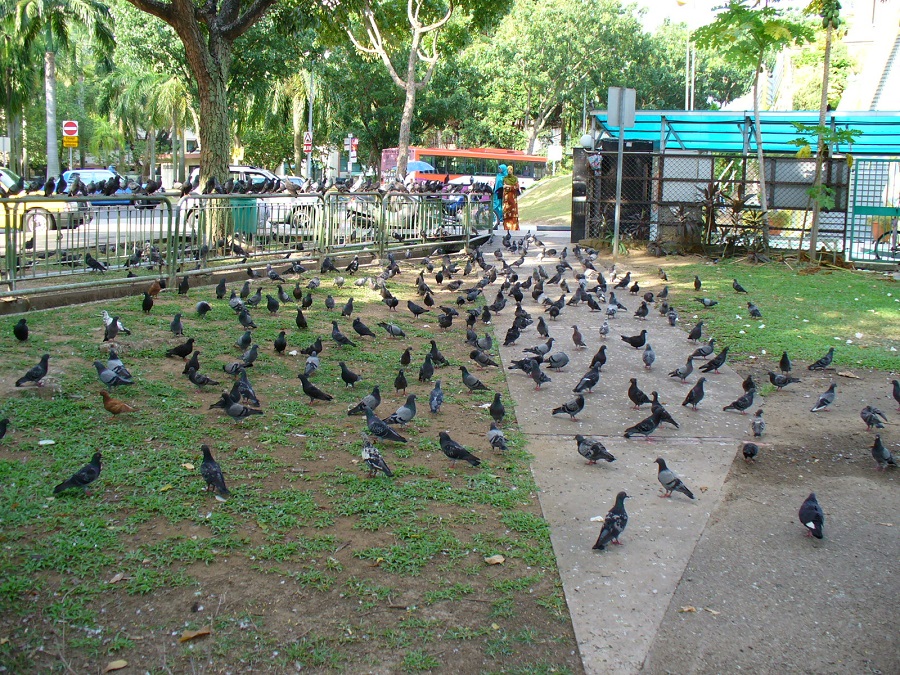
Source: Wikimedia Commons
In fact, this problem has been such a long-standing one that authorities have stepped in many times to urge the public to adhere to regulations in hopes of curbing it.
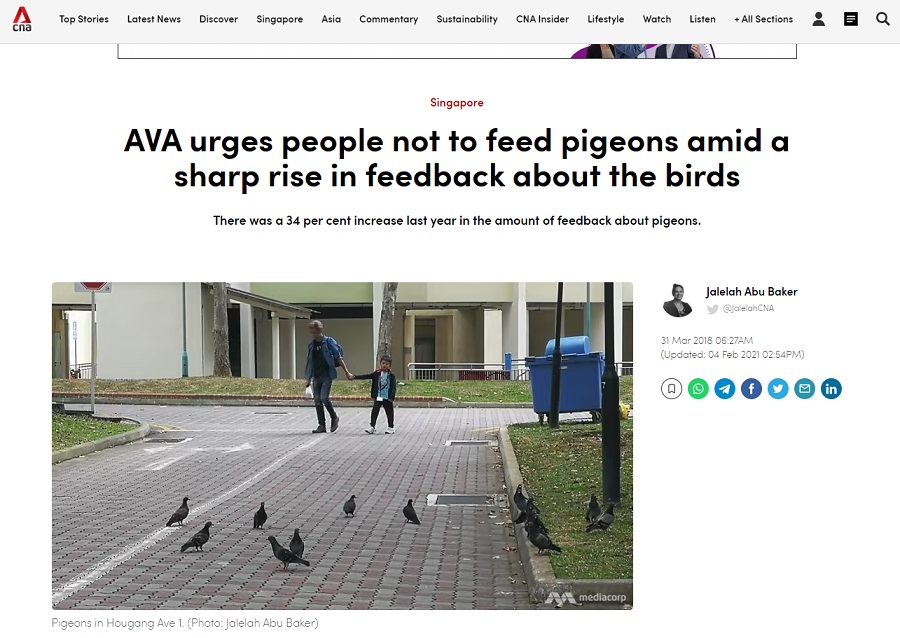
Source: CNA
But whether residents intend for it or not, the food and waste they leave behind have continued to become a major cause for the large pigeon populations in certain areas.
With so many of these birds around, they leave droppings everywhere too, which you’ve probably seen on HDB ledges, food court tables and pavements.
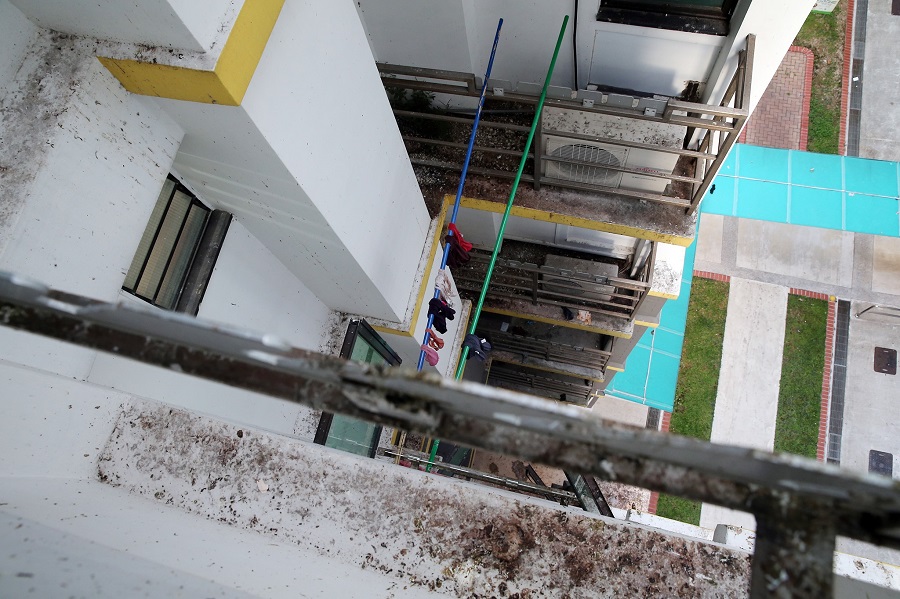
Source: Shin Min Daily News 新明日报 on Facebook
Not only are these droppings unsightly, but they also stain clothing that residents leave out to dry, and if contaminated, can spread diseases to humans, noted the Animal & Veterinary Service (AVS).
Since the health concerns are rather serious, the authorities have to act quickly, which is why merely reducing the birds’ food source may not be enough.
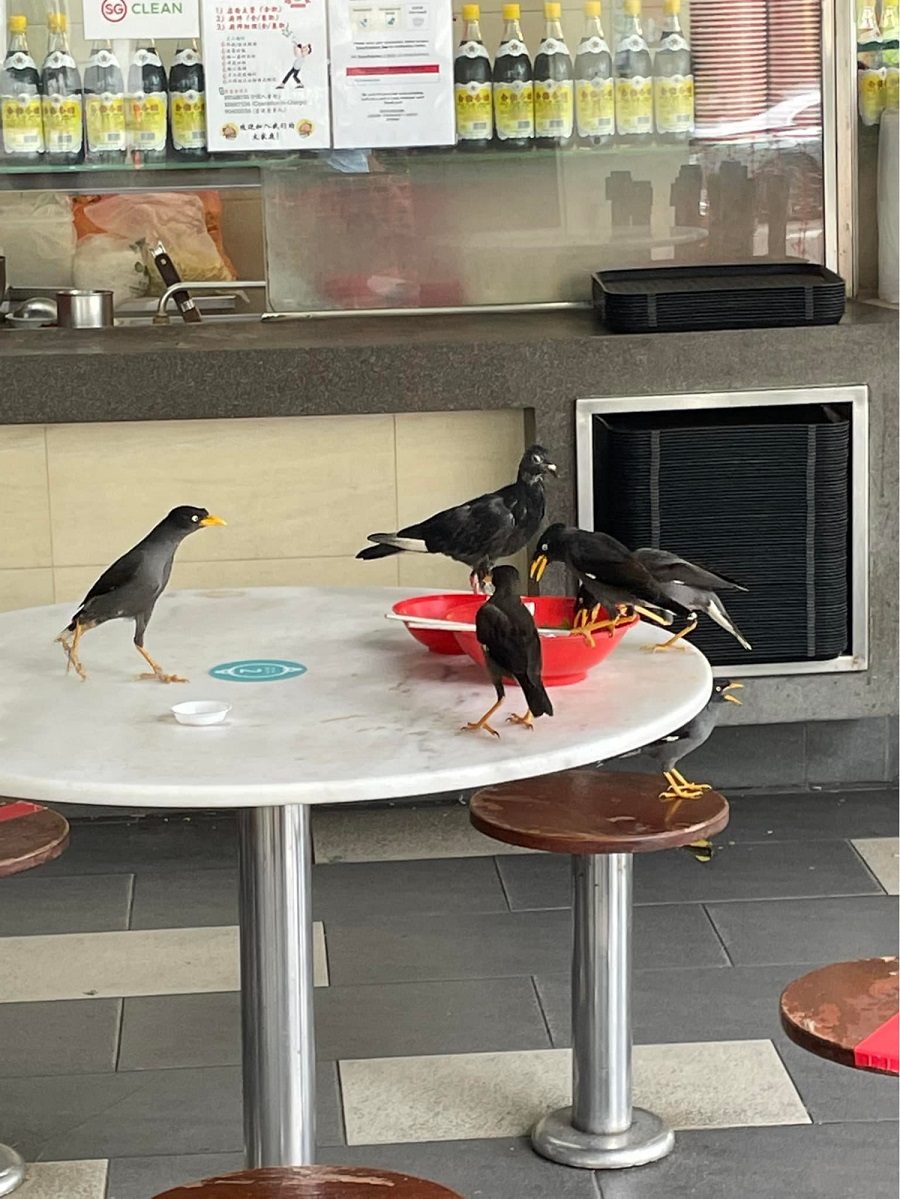
Source: Facebook
Responding to a parliamentary question in 2022, the Ministry of Development (MND) shared that they adopt a “community and science-based approach” to manage the bird population in Singapore.
The approach comprises measures like habitat modification, food source reduction, capturing and euthanasia. Evidently, just one isn’t enough to combat the pressing issue, which requires a multi-pronged solution.
Some birds may harm people & inflict injury
The urgency to curb the bird population in Singapore also arises from safety concerns, especially in light of increased crow attacks on unsuspecting passers-by.
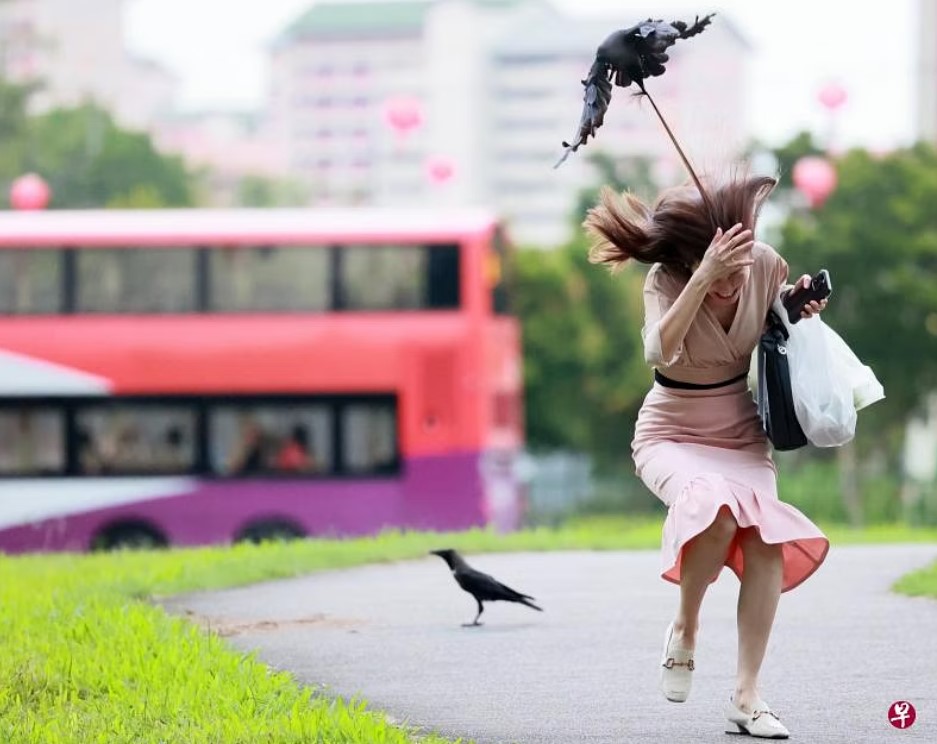
Source: Shin Min Daily News
In Feb 2023, a pathway in Bishan became infamous for vicious crow attacks on innocent passers-by. Shin Min Daily News reporters on site observed at least 10 such assaults in just 20 minutes.
Such attacks, unfortunately, aren’t new – several years back in 2019, Stomp reported that at least 30 people fell victim to crow attacks in Toa Payoh.
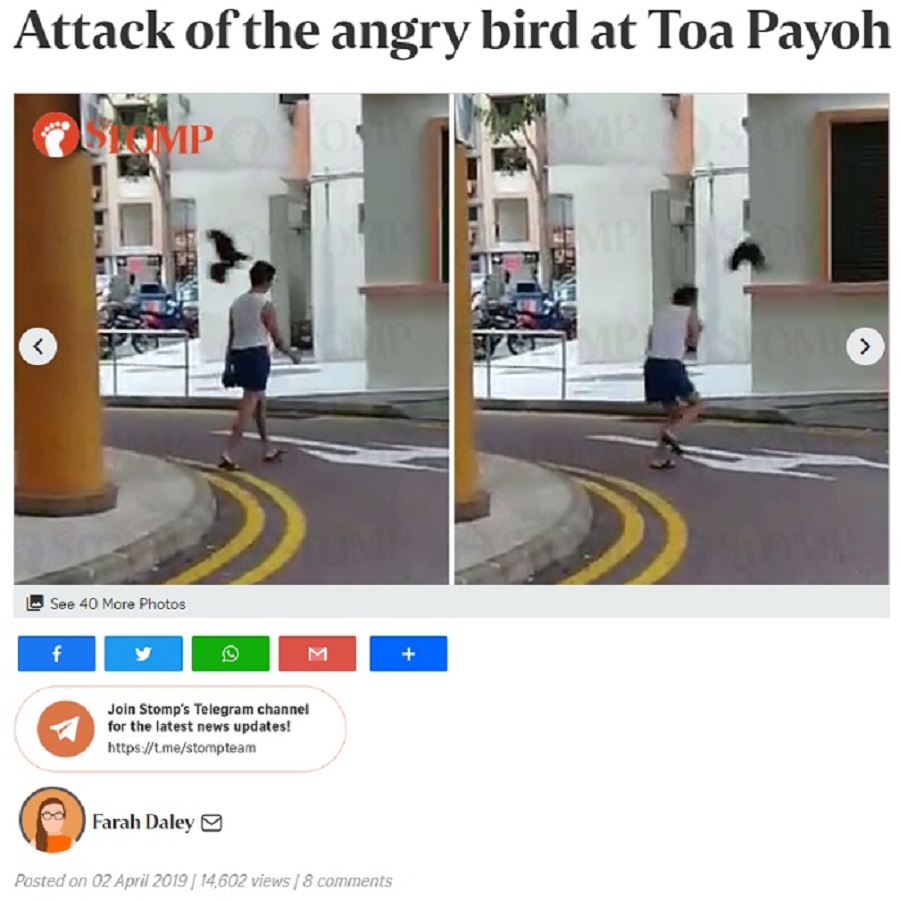
Source: Stomp
Similarly, The New Paper (TNP) published the story of a woman who suffered lacerations from a crow attack in Pasir Ris.
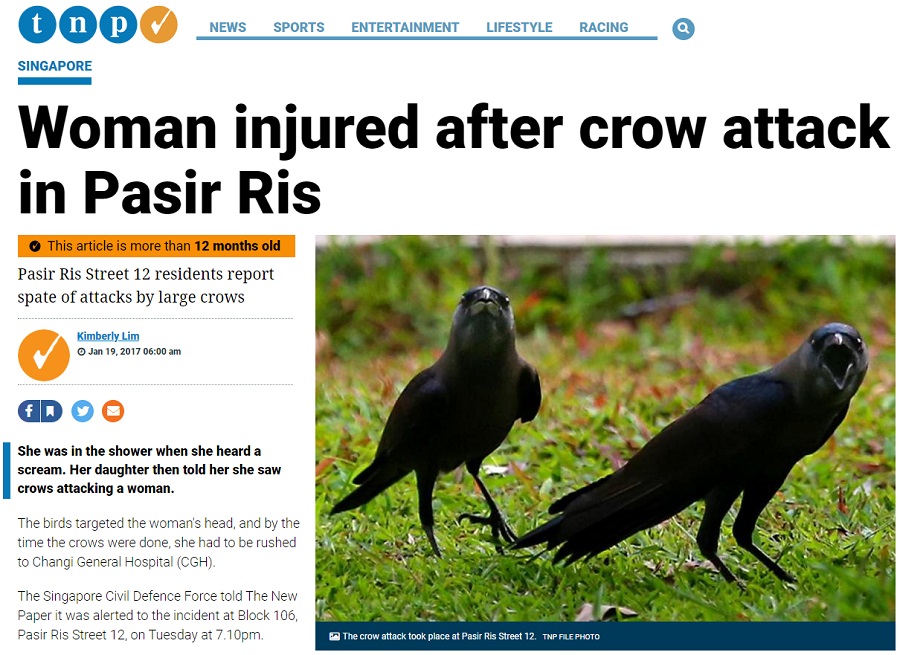
Source: TNP
These incidents were grave enough that a parliamentary question was raised in 2020 regarding methods of managing the crow population.
In response, the MND revealed that NParks recorded 2,750 instances of crow-related feedback, relating to issues such as noise, crow sightings, feeding and attacks.
Interestingly, their answer regarding the methods was very similar to the one in 2022, indicating that solutions to the problem had not changed.
With vulnerable groups such as the elderly and young children at risk of injury, the authorities evidently have to resort to more time-sensitive measures.
When “habitat modification” and “food source reduction” do not give the desired results, “capturing” and “euthanasia” are the only available options.
Consider long-term solutions to control bird population
Of course, animal lovers will argue for more humane methods that will not take the birds’ lives, such as capturing and possibly releasing them elsewhere.
Some public facilities like walkways and hawker centres have also sported spikes that prevent birds from perching at certain places.
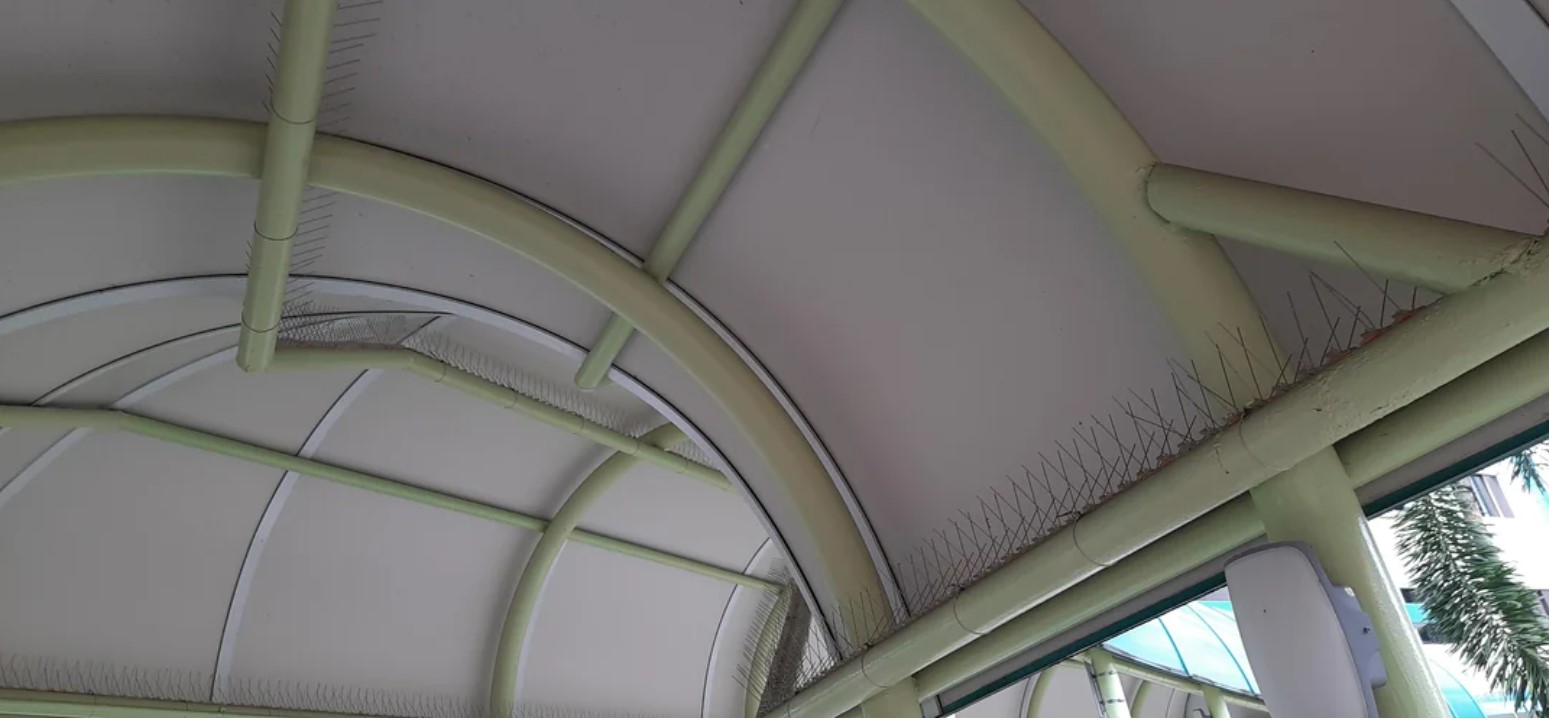
Source: Reddit
However, National Environment Agency (NEA) Group Director Andrew Low noted in a 2022 statement that such measures will only reduce and not necessarily eliminate bird nuisance.
Highly intelligent creatures, birds can apparently adapt quickly to such measures. Therefore, unlike other animals that can be tracked, monitored and neutered, finding the perfect solution to control the bird population is difficult.
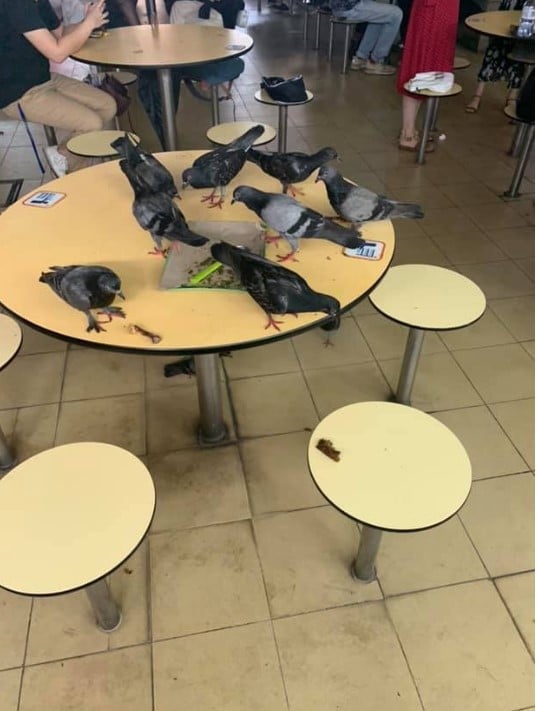
Source: Reddit
Nevertheless, arguments can be made to consider long-term solutions to control the bird population and stop unnecessary culling.
Local wildlife rescue group the Animal Concerns Research and Education Society (ACRES) proposed reducing the creatures’ access to food and altering their habitats as “sustainable ways forward”.
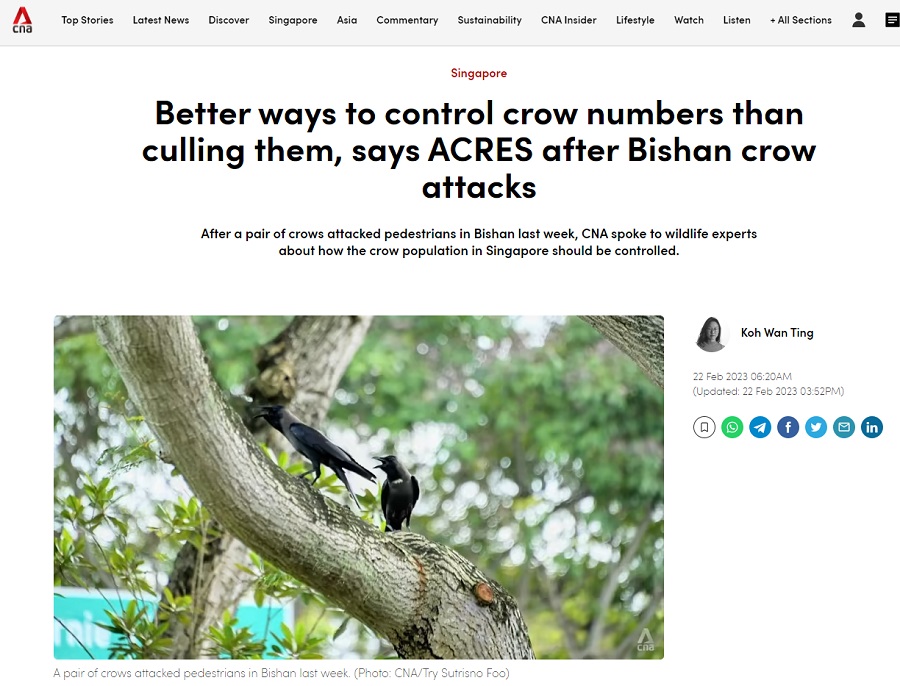
Source: CNA
ACRES’ co-CEO Anbarasi Boopal told CNA in an interview that crows tend to gather and make loud noises to share “information on roost sites and food sources nearby”.
To mitigate this issue, she suggested that town councils prune trees and redesign roosting sites like the open level of multi-storey carparks. In terms of food sources, Ms Boopal claimed that the mandatory tray return scheme has helped to reduce complaints against pigeons, as food waste is an easy food source.
But of course, that is merely one method. The onus is still on the public to play their part by discarding food waste properly and not feeding birds. Counting on such measures to be effective will take time, which circumstances may not always permit.
Integrated method needed to control bird population
While the authorities can and have been trying out various solutions, the conclusion remains that long-term, ‘humane’ methods may not suffice in curbing the local bird population.
Even with culling, Mr Tan Gim Cheong, chairman of the Nature Society of Singapore’s bird group, shared with CNA that the birds will continue to reproduce.
Therefore, to keep their population in check, both culling and food management have to go hand-in-hand.
Perhaps, for the former, the authorities can consider more subtle approaches to reduce the shock among the community.
They can do this by pre-empting residents before carrying out the procedure and clearing the estate of dead birds promptly after.
Alternatively and more ideally, they should trap the creatures and put them to sleep at a separate location away from the public eye.
At the same time, the authorities could tighten regulations on bird feeders as well as increase the frequency of cleaning in public eating spaces to discourage birds from congregating.
No perfect solution to a pertinent problem
All in all, although a softer approach could resolve some long-term issues, it’s apparent that more drastic measures become necessary when the situation turns serious or risky, endangering public safety.
Therefore, until activists or the authorities can come up with a more efficient strategy, culling is the most effective way to control the bird population in Singapore.
Moreover, the authorites have long stopped shooting the birds and pivoted to other ways of euthanising them without physically wounding the animals. But hopefully, at some point in the future, this can change and humans can find a way to co-exist peacefully with birds without having the need to cull some of them.
Note: The views expressed within this article are the author’s own.
Have news you must share? Get in touch with us via email at news@mustsharenews.com.
Featured image adapted from Melvdesigns via You, Me, & Biodiversity and Facebook.

Drop us your email so you won't miss the latest news.
